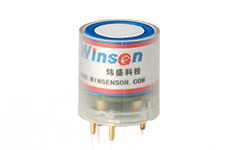 Esperanto
Esperanto
 Shqiptare
Shqiptare
 Euskara
Euskara
 Zulu
Zulu
 Latinus
Latinus
 Cymraeg
Cymraeg
 தமிழ்
தமிழ்
 Slovak
Slovak
 Slovak
Slovak
 Afrikaans
Afrikaans
Coal Mining Industry Poison Gas Monitoring
Mining safety: how to monitor harmful gases in mines?
According to different on-site environments, gas detection should choose the corresponding gas alarm and gas detector.
Mainly methods for gas detection in the coal mining industry:
1. Flammable gas
Flammable gas is mainly detected by catalytic sensor, mainly measuring 100% LEL, and also using thermal conductivity components to measure 100% VOL. High-end gas detection products in the petrochemical industry are gradually using infrared gas sensors, which can measure 100% LEL and 100% VOL. At the same time, laser beam technology is also gradually being used in the petrochemical industry.
2. Oxygen and toxic gas
Mainly use electrochemical gas sensors, which can measure various toxic gases and oxygen. Infrared sensors and ultraviolet sensors are also gradually applied in the detection of special toxic gases.
Source and upper limit of concentration of different harmful gases in mines

Mine harmful gas refers to the gas in the mine that is harmful to human body. Mainly includes CO,CO2,H2S,SO, ammonia, etc. and explosive gases such as biogas (methane), hydrogen and methane homologues (ethane, propane, etc.). The main component of harmful gas in coal mines is biogas.
Carbon monoxide (CO)
Main sources: blasting; mine fires; coal spontaneous combustion and coal dust gas explosion accidents, etc.
The maximum allowable concentration of carbon monoxide (CO) is 24ppm
Hydrogen Sulfide (H2S)
Main sources: decay of organics; hydrolysis of sulfur-containing minerals; mineral oxidation and combustion;released from water in old empty areas and old alley areas .
The maximum allowable concentration of hydrogen sulfide (H2S) is 6.6ppm
Nitrogen dioxide (NO2)
Main sources: underground blasting work.
The maximum allowable concentration of nitrogen dioxide (NO2) is 2.5ppm
Sulphur dioxide (SO2)
Main sources: Oxidation and spontaneous combustion of sulphur-bearing minerals; blasting in sulphur-bearing minerals; gushing from sulphur deposits.
The maximum allowable concentration of sulfur dioxide (SO2) is 5ppm
Ammonia (NH3)
Main sources: blasting work, water extinguishing, etc.; gushing from some rock stratum.
The maximum allowable concentration of ammonia (NH3) is 40ppm
Hydrogen (H2)
Main sources: Hydrogen gas can be released when the underground battery is charged; gushing from some moderately metamorphic coal seams.
Main hazards: When the hydrogen concentration in the air is 4-74%, there is a danger of explosion.
Winsen offering for poison gas monitoring
 |
|
▲ZE03 Electrochemical Sensor Module |
Winsen ZE03 electrochemical module, equipped with different gas sensors, can measure the corresponding gas includes CO, O2, NH3, H2S, NO2, O3, SO2, CL2, HF, H2, PH3, HCL, etc.
The gas composition in mines represents a wide variety of hazardous situations. Therefore, different types of gas sensors are installed in many underground gas detection equipment. By replacing different gas detection probes to detect complex gas composition and concentration, to ensure the safety of mine production.
RELATED PRODUCTS
Electrochemical Integrated Gas Sensor ZE12A
ZE12A is a general-purpose and high-performance electrochemical module. It can detect the CO, SO2, NO2, O3 based on electrochemical principle, it has good selectivity and stability. A temperature sensor is built-in for temperature compensation. It has the digital output and analog voltage output at the same time which facilities the usage and calibration and shorten the development period. It is a combination of mature electrochemical detection principle and sophisticated circuit design, to meet customers’ different detection needs.
Flat Semiconductor Integrated Gas Sensor ZP01
ZP01-MP503 air-quality module adopts flat surface semiconductor gas sensor. The module has very high sensitivity to volatile organic gases such as formaldehyde, benzene, carbon monoxide, ammonia, hydrogen, alcohol and smoke of cigarette, essence &etc. The module has been aging, debugged, adjusted and calibrated. So it has good consistency and high sensitivity.
Flat Semiconductor Integrated Gas Sensor ZP16
ZP16 air-quality module adopts flat surface semiconductor gas sensor. The module has good sensitivity to volatile organic gases such as formaldehyde, benzene, carbon monoxide, ammonia, hydrogen, alcohol and smoke of cigarette, essence &etc. The module has been aging, debugged, adjusted and calibrated. So it has good consistency and high sensitivity.
The MH-Z19D carbon dioxide gas sensor uses the principle of non-dispersive infrared (NDIR) to detect the presence of CO2 in the air, and has two types of pins and terminals. It is a high-performance sensor produced by combining mature infrared absorption gas detection technology with precise optical path design and sophisticated circuit design.
MH-Z19C NDIR infrared gas module is a common type, small size sensor, pins type or terminal type, using non-dispersive infrared (NDIR) principle to detect the existence of CO2 in the air, with good selectivity, non-oxygen dependent and long life. Built-in temperature compensation; and it has UART output and PWM output. It is developed by the tight integration of mature infrared absorbing gas detection technology, precision optical circuit design and superior circuit design.
MH-Z19E NDIR infrared gas module is a common type, small size sensor, pins type or terminal type, using non-dispersive infrared (NDIR) principle to detect the existence of CO2 in the air, with good selectivity, non-oxygen dependent and long life. Built-in temperature compensation; and it has UART output and PWM output. It is developed by the tight integration of mature infrared absorbing gas detection technology, precision optical circuit design and superior circuit design.
Electrochemical Formaldehyde Sensor ZE08K-CH2O
ZE08K-CH2O electrochemical chemical formaldehyde module is a universal, small Module. The use of electrochemical principles to detect CH2O in the air, which has good selectivity and stability. At the same time, it has digital output and analog voltage output for easy use. ZE08K-CH2O is a universal gas module designed to design mature electrochemical detection technology with excellent circuit design.
Temperature and Humidity Sensor Module ZS05
ZS05 temperature and humidity module is a digital signal output temperature and humidity sensor module. It uses dedicated digital module acquisition technology to ensure high reliability and stability. ZS05 adopts standard IIC communication mode, which can be directly connected to IIC communication bus, easy to use
This sensor integrates infrared PM2.5 detection technology, using particle counting principle to detect PM2.5 in the environment. It can detect the particles (diameter ≥1μm).
This sensor integrates infrared PM2.5 detection technology, using particle counting principle to detect PM2.5 in the environment. It can detect the particles (diameter ≥1μm).
Laser Dust sensor module ZH07 is a common type, small size sensor, using laser scattering principle to detect the dust particles in air, with good consistency and stability. It is easy to use, with UART & PWM output.
Laser Dust sensor module is a common type, small size sensor, using laser scattering principle to detect the dust particles in air, with good selectivity and stability. It is easy to use, with serial port output & PWM output.
ZH06-I is a laser dust sensor that can detect PM1.0, PM2.5, PM10. The vortex fan is adopted, and the air is discharged from the side. The terminal model is 1.25T-8p.
MEMS combustible gas sensor is using MEMS micro-fabrication hot plate on a Si substrate base, gas-sensitive materials used in the clean air with low conductivity metal oxide semiconductor material. When the sensor exposed to gas atmosphere, the conductivity is changing as the detected gas concentration in the air. The higher the concentration of the gas, the higher the conductivity. Use simple circuit can convert the change of conductivity of the gas concentration corresponding to the output signal.
MEMS combustible gas sensor is using MEMS micro-fabrication hot plate on a Si substrate base, gas-sensitive materials used in the clean air with low conductivity metal oxide semiconductor material. When the sensor exposed to gas atmosphere, the conductivity is changing as the detected gas concentration in the air. The higher the concentration of the gas, the higher the conductivity. The sensor has high sensitivity and small size, and adopts I2C digital signal output mode to facilitate the observation of multiple sensor networks. It also pre-sets a pin for alarm trigger signal output, which can be widely used in many fields such as environmental safety and portable instruments.
How to choose the right sensor for your project?
We have 17 sensor series, 200+ categories, and 300+ detection objects for gas detection. Such as CO, CO2, VOC, PM2.5, CH4, LPG and so on. In particular, we also have MEMS sensors. According to your industry application, gas principle, power consumption, accuracy, and range requirements, and we can select a specific model for you. You can also use the product filter below to choose a suitable product, or choose online serivce.
Related Links
The first six FAQs. Use the search bar above to reveal more!
What is the Difference Between Semiconductor Sensors and Electrochemical Sensors?
What is the Service Life of Mq Series Sensors?
Why Does the Sensitivity of the Semiconductor Sensor Reduce During Use?









